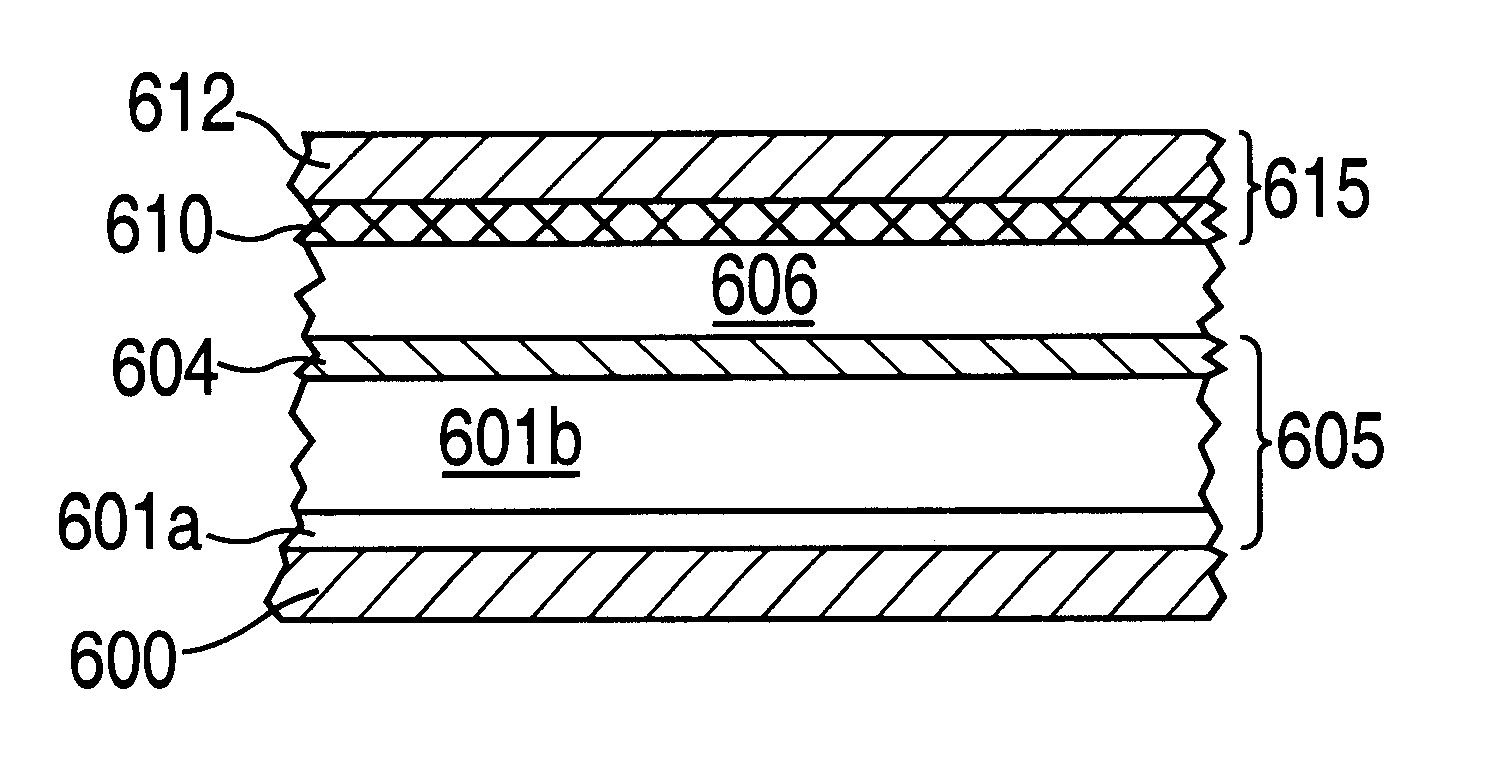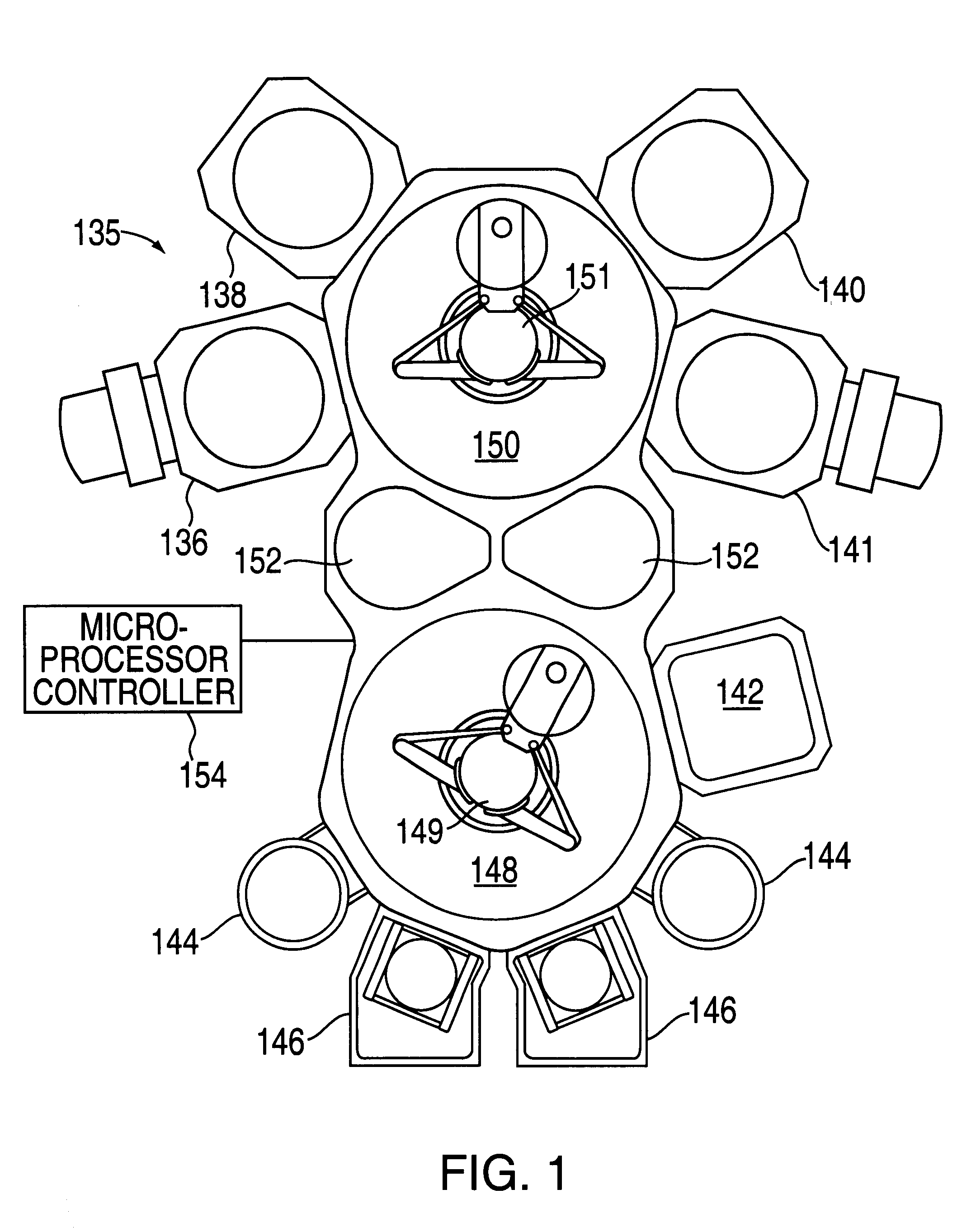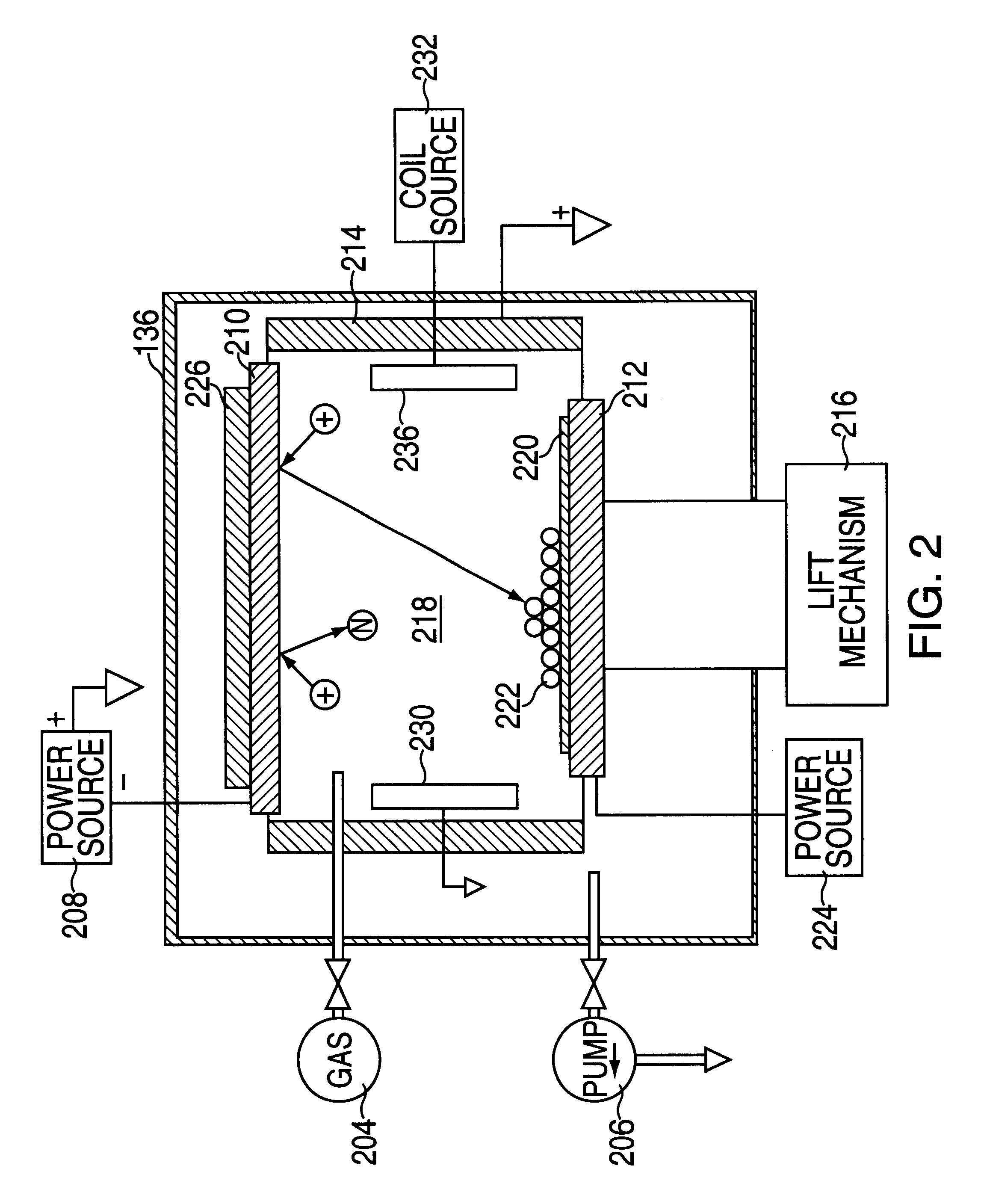Method of forming metal electrodes
a metal electrode and metal electrode technology, applied in the direction of coatings, transistors, chemical vapor deposition coatings, etc., can solve the problems of changing the electrical properties of the capacitor, the potential for oxidation during the fabrication, and the limited area available for the capacitor
- Summary
- Abstract
- Description
- Claims
- Application Information
AI Technical Summary
Problems solved by technology
Method used
Image
Examples
Embodiment Construction
The steps recited in the example above were repeated. In addition, prior to deposition of the Ta.sub.2 O.sub.5 insulator, the ruthenium lower electrode was exposed to an oxygen-containing environment. Values for the leakage current and the voltage were measured and are illustrated in FIG. 8. As shown by curve 800, the capacitor exhibits reproducible results in the positive and negative regions, regardless of which is measured first.
It is believed that the treatment or annealing steps form a conducting oxygen-containing layer respectively at the interfaces between the upper metal layer and the insulator and between the insulator and the lower metal layer. Accordingly, the oxygen-containing layers serve a barrier function, preventing migration of atoms / molecules between the insulator and the metal layers. For example, the oxygen-containing layers are believed to inhibit the metal layers from scavenging for oxygen in nearby regions of the capacitor, e.g., the insulating layer. As a res...
PUM
| Property | Measurement | Unit |
|---|---|---|
| dielectric constant | aaaaa | aaaaa |
| temperature | aaaaa | aaaaa |
| temperature | aaaaa | aaaaa |
Abstract
Description
Claims
Application Information
 Login to View More
Login to View More - R&D
- Intellectual Property
- Life Sciences
- Materials
- Tech Scout
- Unparalleled Data Quality
- Higher Quality Content
- 60% Fewer Hallucinations
Browse by: Latest US Patents, China's latest patents, Technical Efficacy Thesaurus, Application Domain, Technology Topic, Popular Technical Reports.
© 2025 PatSnap. All rights reserved.Legal|Privacy policy|Modern Slavery Act Transparency Statement|Sitemap|About US| Contact US: help@patsnap.com



